INSTITUT SUPERIEUR D'ANTHROPOLOGIE
INSTITUTE OF ANTHROPOLOGY
ONLINE COURSES / COURS A DISTANCE
DEBUT COURS : AVRIL 2023
REGISTER NOW
COLOMBIE – 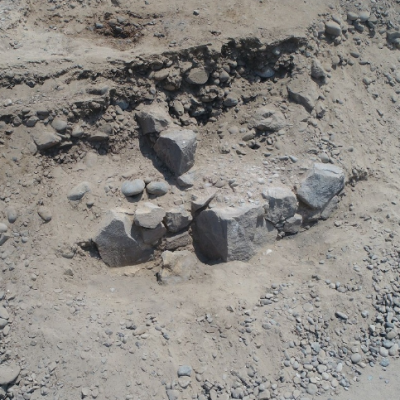
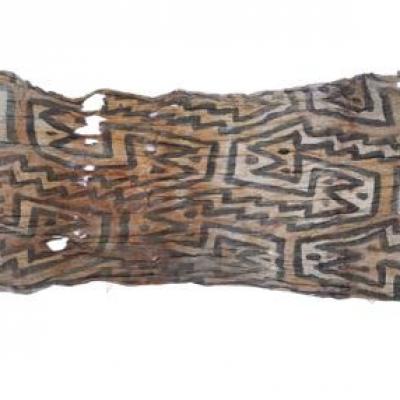 Cerro Colorado – Archaeologists have excavated a pre-columbian temple complex. Excavations are part of the Programa de investigacion “Los valles de Barranca” project, which is exploring four large mounds on the Cerro Colorado hill. Research conducted on two of the mounds revealed human burials and monumental architecture made of dried bricks and stone blocks. This has led to a widescale excavation of the site where the project has uncovered destroyed burials in the form of burial bundles, placed within the remains of a temple complex built of dried brick. One of the destroyed burials contains the remains of a young boy whose skull was intentionally deformed. He was originally placed in a 3-metre-long fabric which is decorated with totally unique zoomorphic representations and was buried with decorated textiles suggesting that he came from a high-status family. A physico-chemical analysis and carbon dating of organic remains has placed the construction of the temple complex to around 2500-2200 BC, while the same technique applied to the burials suggests that they were interred between AD 772 and 989. Bioarchaeologist, Łukasz Majchrzak, said: “Andeans used to set up necropolises in abandoned places of worship. This was also the case here, because the graves were dug into structures that were several thousand years older.” Samples used for dating the structure were taken from grass mixed with mortar, which was used to hold together blocks that formed a small pyramid. During the 3rd millennium BC, settlements with monumental architecture were established in the Andes, and agriculture became widespread as a result of contacts with communities living in the Amazon. The examined graves come from the period when the region was part of the Wari Empire. One of the most important sites of this culture, Castillo de Huarmey, is located only 70 km north of Barranca.
Cerro Colorado – Archaeologists have excavated a pre-columbian temple complex. Excavations are part of the Programa de investigacion “Los valles de Barranca” project, which is exploring four large mounds on the Cerro Colorado hill. Research conducted on two of the mounds revealed human burials and monumental architecture made of dried bricks and stone blocks. This has led to a widescale excavation of the site where the project has uncovered destroyed burials in the form of burial bundles, placed within the remains of a temple complex built of dried brick. One of the destroyed burials contains the remains of a young boy whose skull was intentionally deformed. He was originally placed in a 3-metre-long fabric which is decorated with totally unique zoomorphic representations and was buried with decorated textiles suggesting that he came from a high-status family. A physico-chemical analysis and carbon dating of organic remains has placed the construction of the temple complex to around 2500-2200 BC, while the same technique applied to the burials suggests that they were interred between AD 772 and 989. Bioarchaeologist, Łukasz Majchrzak, said: “Andeans used to set up necropolises in abandoned places of worship. This was also the case here, because the graves were dug into structures that were several thousand years older.” Samples used for dating the structure were taken from grass mixed with mortar, which was used to hold together blocks that formed a small pyramid. During the 3rd millennium BC, settlements with monumental architecture were established in the Andes, and agriculture became widespread as a result of contacts with communities living in the Amazon. The examined graves come from the period when the region was part of the Wari Empire. One of the most important sites of this culture, Castillo de Huarmey, is located only 70 km north of Barranca.
https://www.heritagedaily.com/2023/03/archaeologists-uncover-a-pre-columbian-temple-complex/146441
CHINE - Lishui River Basin - A Ming Dynasty (A.D. 1368–1644) tomb has been discovered in central China’s mountainous Lishui River Basin. Tan Yuanhui of the Lixian County Archaeological Research and Cultural Relics Protection Center said that the joint tomb consists of two arched burial chambers whose walls bear murals of flowers. A niche in the north chamber features 16 auspicious words, he added. And although the tomb has been looted, its shape, scale, and murals suggest that its owners were of high status, explained research team member Zhou Hua. The researchers have completed 3-D scanning of the structures for additional study.
https://www.archaeology.org/news/11274-230309-china-joint-tomb
CHINE – 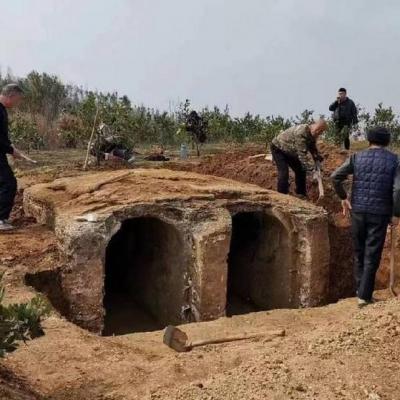
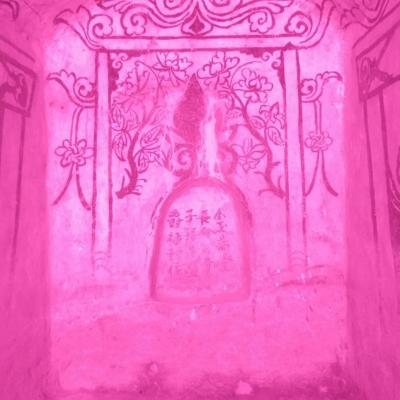 - Archaeologists have uncovered a dual-occupancy tomb in the Hunan Province, estimated to be over 400 years old, according to a March 7 news release from the Li County Archaeological Research and Cultural Relics Protection Center. The researchers believe it was built during the Ming Dynasty, a period of time from 1368 to 1644 ruled by Zhu Yuanzhang. It was a period of strong Chinese influence both culturally and politically on its regional neighbors, according to Encyclopedia Britannica. It was also a period of decorative arts, pottery, bronzework and artistic achievement. That was the case for this double-chambered tomb. Archaeological experts said the tomb was the first mural tomb found in the region, and the inside was decorated with paintings of flowers and nature. Though the tombs are now empty, likely due to grave robbers in centuries past, the researchers used infrared imaging technology to see what used to line the walls, according to the release. The researchers said they could see phrases such as “full of gold and jade, long life and wealth, prosperous sons and grandsons, and titles of nobility” painted on the walls in the back of the tomb. They believe that the occupants of the tomb had high social status because of the size and shape of the tomb, as well as what was painted inside. In between the two chambers of the tomb, there was a hole cut-out, connecting the two open spaces. The researchers said it was called a “bridge of immortality.” In Ancient China, the “bridge of immortality” was a way for two people who were married in life to stay together, even in death. The hole gave a promise of an even better marriage in the afterlife, according to the release. Researchers believe that the tomb was a final resting place for a husband and wife.
- Archaeologists have uncovered a dual-occupancy tomb in the Hunan Province, estimated to be over 400 years old, according to a March 7 news release from the Li County Archaeological Research and Cultural Relics Protection Center. The researchers believe it was built during the Ming Dynasty, a period of time from 1368 to 1644 ruled by Zhu Yuanzhang. It was a period of strong Chinese influence both culturally and politically on its regional neighbors, according to Encyclopedia Britannica. It was also a period of decorative arts, pottery, bronzework and artistic achievement. That was the case for this double-chambered tomb. Archaeological experts said the tomb was the first mural tomb found in the region, and the inside was decorated with paintings of flowers and nature. Though the tombs are now empty, likely due to grave robbers in centuries past, the researchers used infrared imaging technology to see what used to line the walls, according to the release. The researchers said they could see phrases such as “full of gold and jade, long life and wealth, prosperous sons and grandsons, and titles of nobility” painted on the walls in the back of the tomb. They believe that the occupants of the tomb had high social status because of the size and shape of the tomb, as well as what was painted inside. In between the two chambers of the tomb, there was a hole cut-out, connecting the two open spaces. The researchers said it was called a “bridge of immortality.” In Ancient China, the “bridge of immortality” was a way for two people who were married in life to stay together, even in death. The hole gave a promise of an even better marriage in the afterlife, according to the release. Researchers believe that the tomb was a final resting place for a husband and wife.
https://www.charlotteobserver.com/news/nation-world/world/article272958130.html#storylink=mainstage_lead
BELGIQUE – Oud-Turnhout - Des archéologues ont découvert fin décembre un cimetière datant de l'âge de fer (800 à 50 ans avant Jésus-Christ) sur le site d'un grand projet immobilier à Oud-Turnhout, en région anversoise. Ils y ont trouvé des tumulus, c'est-à-dire des monticules surmontant des sépultures. Six cercles funéraires y avaient déjà été découverts et trois autres la semaine dernière après des fouilles plus approfondies. En raison de l'agriculture intensive sur ce site, le cimetière a disparu sous terre au fil des siècles. Des vestiges d'habitations datant de 2.000 à 50 ans avant Jésus-Christ ont également été découverts à côté du cimetière. Les archéologues ne peuvent pour l'instant pas affirmer que ces habitations ont coexisté avec le cimetière.
https://www.lalibre.be/dernieres-depeches/2023/03/07/des-archeologues-decouvrent-des-sepultures-datant-de-lage-de-fer-a-oud-turnhout-33SZWEASHBBDHCWLR5HJ5AB5JA/
AUSTRALIE –  Shark Bay - “Une minuscule statue de Bouddha en bronze, authentifiée comme étant une ancienne relique de la dynastie chinoise Ming, pourrait être la preuve que des marins chinois ont accosté en Australie des siècles avant les Européens”, résume, le 8 mars, le site d’information australien News. L’histoire débute en 2018. Munis de détecteurs de métaux, deux documentaristes arpentaient une plage de l’État d’Australie-Occidentale, à quelque 800 kilomètres de Perth, afin de préparer le tournage d’un film sur l’expédition française Baudin (1800-1803). Mais, écrit The Guardian Australia, “il n’y avait aucune trace d’une exploration remontant à l’époque napoléonienne”. En revanche, ce qu’ils ont découvert était “beaucoup plus inattendu” : un bouddha en bronze de 15 centimètres de haut, pesant 1 kilo et vieux, probablement, de plusieurs centaines d’années. Leon Deschamps et Shayne Thomson ont alors entrepris un long travail pour tenter de comprendre comment la statuette chinoise avait pu se retrouver à Shark Bay.
Shark Bay - “Une minuscule statue de Bouddha en bronze, authentifiée comme étant une ancienne relique de la dynastie chinoise Ming, pourrait être la preuve que des marins chinois ont accosté en Australie des siècles avant les Européens”, résume, le 8 mars, le site d’information australien News. L’histoire débute en 2018. Munis de détecteurs de métaux, deux documentaristes arpentaient une plage de l’État d’Australie-Occidentale, à quelque 800 kilomètres de Perth, afin de préparer le tournage d’un film sur l’expédition française Baudin (1800-1803). Mais, écrit The Guardian Australia, “il n’y avait aucune trace d’une exploration remontant à l’époque napoléonienne”. En revanche, ce qu’ils ont découvert était “beaucoup plus inattendu” : un bouddha en bronze de 15 centimètres de haut, pesant 1 kilo et vieux, probablement, de plusieurs centaines d’années. Leon Deschamps et Shayne Thomson ont alors entrepris un long travail pour tenter de comprendre comment la statuette chinoise avait pu se retrouver à Shark Bay.
ANGLETERRE – 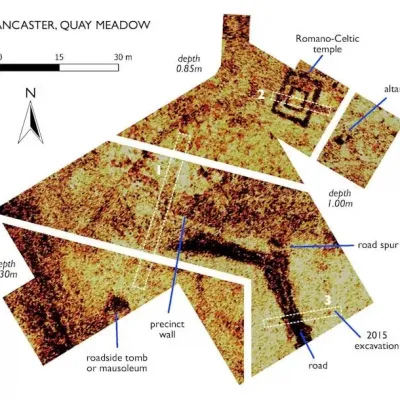 Lancaster - A study exercise for students from Lancaster University has uncovered a Romano-Celtic temple, only the second of its type in northern Britain. The discovery was made during a hydrogeophysics training session near Lancaster’s Roman military fort and castle, revealing an extensive religious enclosure identified as a Romano-Celtic temple. Lancaster had a large military fort and garrison in Roman times. It was an important command center between Chester and Hadrian’s Wall and a base for naval operations and supply. Around AD 80, the Lancaster Roman Fort, also known as Wery Wall, Galacum, or Calunium (the fort’s modern name), was first built atop Castle Hill in Lancaster to guard a bridge over the River Lune. Archaeological evidence suggests that the fort remained active until the end of Roman occupation of Britain in the early 5th century. Using ground penetrating radar, resistivity mapping, and modeling to produce high-resolution 3D images, the study found evidence of a Romano-Celtic temple showing a walled enclosure with a gateway leading to a processional way. The mapping data also shows a possible roadside mausoleum outside the enclosure, and what might be the base of an altar close to the temple. The major discovery was what Beyond the Castle project’s leading archaeologist, Jason Wood believes is a Romano-Celtic temple – only the second such temple found in Northern Britain – the other one is close to Hadrian’s Wall. These temples have a very specific design – two sets of walls forming a square within a square, with a very small interior. “It would have been dedicated to a god, probably associated with the sea or river. The inner sanctum was reserved for the priests, and the outer ambulatory space was for elite members of society,” said Mr Wood. “Most of the religious activities would have happened outside the temple, including sacrifices. There would have been a sanctuary or enclosure, possibly with another temple and buildings associated with hospitality and curing the sick. The enclosure would have been separate from the fort, but connected to it by a road or processional way.”The findings are outlined in the paper ‘Lancaster Romano-Celtic temple is significant find’ published by British Archaeology.
Lancaster - A study exercise for students from Lancaster University has uncovered a Romano-Celtic temple, only the second of its type in northern Britain. The discovery was made during a hydrogeophysics training session near Lancaster’s Roman military fort and castle, revealing an extensive religious enclosure identified as a Romano-Celtic temple. Lancaster had a large military fort and garrison in Roman times. It was an important command center between Chester and Hadrian’s Wall and a base for naval operations and supply. Around AD 80, the Lancaster Roman Fort, also known as Wery Wall, Galacum, or Calunium (the fort’s modern name), was first built atop Castle Hill in Lancaster to guard a bridge over the River Lune. Archaeological evidence suggests that the fort remained active until the end of Roman occupation of Britain in the early 5th century. Using ground penetrating radar, resistivity mapping, and modeling to produce high-resolution 3D images, the study found evidence of a Romano-Celtic temple showing a walled enclosure with a gateway leading to a processional way. The mapping data also shows a possible roadside mausoleum outside the enclosure, and what might be the base of an altar close to the temple. The major discovery was what Beyond the Castle project’s leading archaeologist, Jason Wood believes is a Romano-Celtic temple – only the second such temple found in Northern Britain – the other one is close to Hadrian’s Wall. These temples have a very specific design – two sets of walls forming a square within a square, with a very small interior. “It would have been dedicated to a god, probably associated with the sea or river. The inner sanctum was reserved for the priests, and the outer ambulatory space was for elite members of society,” said Mr Wood. “Most of the religious activities would have happened outside the temple, including sacrifices. There would have been a sanctuary or enclosure, possibly with another temple and buildings associated with hospitality and curing the sick. The enclosure would have been separate from the fort, but connected to it by a road or processional way.”The findings are outlined in the paper ‘Lancaster Romano-Celtic temple is significant find’ published by British Archaeology.
https://arkeonews.net/evidence-of-rare-romano-celtic-temple-near-lancaster-castle-may-be-only-the-second-of-its-type/
GRECE – 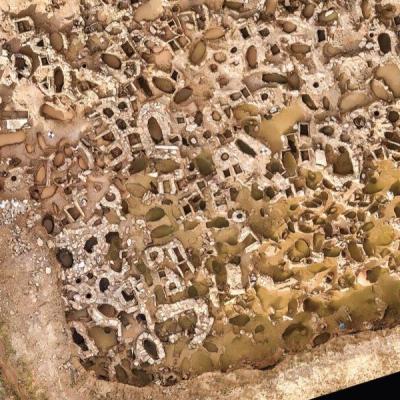
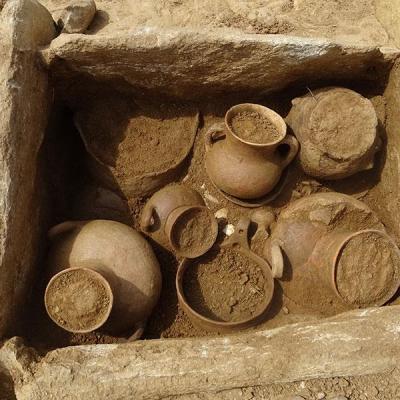 Halkidiki - The ancient and modern history of Halkidiki, buried in the earth came to light and revealed over 1,000 of ancient graves on the peninsula of Kassandra and Sithonia. The Agios Ioannis Coast of Sithonia hid more than a thousand burials of different types with numerous finds of an extensive cemetery of antiquity. Over a thousand burials of different types and numerous findings have been unearthed in recent years on Sithonia’s Agios Ioannis coast. The excavation surveys (2018-19 and 2020) by Halkidiki and Mount Athos Antiquities Ephorate archaeologists Eleni Lambrothanasi, Despoina Vovoura and Charikleia Koromila revealed graves from the 10th to the 5th century BC. The burials include amphorae, burial cases, pit latrines and a sarcophagus that testify to the burial practices of the wider region of Halkidiki from the Iron Age to the early Classical period. Burials in pithos up to two meters high and amphorae inside stone enclosures, burial cases, built cist, pit graves and a sarcophagus bear witness to the burial practices of the wider area of Halkidiki from the Iron Age to the early Classic times. The grave “gifts” that were saved were also rich. Clay vessels in the shape of the beetle and the krater, cauldrons, skyphos, amphorae and teats, figurines, bronze and iron jewelry accompanied the dead. Despite the three excavations, explains Lambrothanasis, it remains unknown to which ancient settlement the cemetery belonged. The first estimates probably refer to the settlement of the island of Kastri where in 1977 researches brought to the surface prehistoric and archaic building remains. The continuation of the excavation will possibly provide the answers for his identification that archaeologists have been looking for for years.
Halkidiki - The ancient and modern history of Halkidiki, buried in the earth came to light and revealed over 1,000 of ancient graves on the peninsula of Kassandra and Sithonia. The Agios Ioannis Coast of Sithonia hid more than a thousand burials of different types with numerous finds of an extensive cemetery of antiquity. Over a thousand burials of different types and numerous findings have been unearthed in recent years on Sithonia’s Agios Ioannis coast. The excavation surveys (2018-19 and 2020) by Halkidiki and Mount Athos Antiquities Ephorate archaeologists Eleni Lambrothanasi, Despoina Vovoura and Charikleia Koromila revealed graves from the 10th to the 5th century BC. The burials include amphorae, burial cases, pit latrines and a sarcophagus that testify to the burial practices of the wider region of Halkidiki from the Iron Age to the early Classical period. Burials in pithos up to two meters high and amphorae inside stone enclosures, burial cases, built cist, pit graves and a sarcophagus bear witness to the burial practices of the wider area of Halkidiki from the Iron Age to the early Classic times. The grave “gifts” that were saved were also rich. Clay vessels in the shape of the beetle and the krater, cauldrons, skyphos, amphorae and teats, figurines, bronze and iron jewelry accompanied the dead. Despite the three excavations, explains Lambrothanasis, it remains unknown to which ancient settlement the cemetery belonged. The first estimates probably refer to the settlement of the island of Kastri where in 1977 researches brought to the surface prehistoric and archaic building remains. The continuation of the excavation will possibly provide the answers for his identification that archaeologists have been looking for for years.
https://www.keeptalkinggreece.com/2023/03/10/halkidiki-ancient-graves-large-cemetery/
EGYPTE - 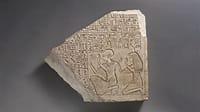 Egyptologist Victoria Almansa-Villatoro, a junior research fellow at the Harvard Society of Fellows, delivered a lecture on meteoritic iron in ancient Egypt hosted by the Harvard Museums of Science and Culture Thursday evening. In her lecture, titled “Iron in the Sky: Meteorites in Ancient Egypt,” Almansa-Villatoro used texts, iconography, and ritual objects excavated from pre-Iron Age pyramids to discuss whether ancient Egyptians understood that meteorites came “out of the sky.” The subject of the lecture came from Almansa-Villatoro’s 2020 research article “The Cultural Indexicality of the N41 Sign for bjȝ: The Metal of the Sky and the Sky of Metal,” which was published in the Journal of Egyptian Archaeology. Almansa-Villatoro began the lecture by explaining that the earliest evidence of an iron object in the world comes from Egypt, which “came last to the Iron Age” — a period lasting from the 1200 to approximately 550 BCE when use of iron became “much more widespread.” The crux of her talk focused on the ancient Egyptian hieroglyph bjȝ, which scholars associate with both iron and the sky. “Besides these metallic associations, bjȝ also means sky — simply sky — and in particular, the sky as an ocean that must be ferried across,” she said. “If the sky contains water that falls on Earth like rain, it can contain also iron that fall on earth as meteorites,” she added. According to Almansa-Villatoro, the hieroglyph bjȝ has appeared on the walls of pre-Iron Age pyramids. Archaeologists have discovered bjȝ in texts of Egyptian creation myths, including a story about a broken primeval egg, which she defined as “an element of creation also associated with the womb of the sky goddess Nut.”Through the association of bjȝ with Egyptian mythology, Almansa-Villatoro argued that ancient Egyptians linked the hieroglyph to the concept of rebirth. “Breaking the egg means reversing the natural order of birth and death and those going from death to reverse — which is a metaphor for resurrection inside the womb sky,” Almansa-Villatoro said. At the close of the talk, Almansa-Villatoro said she hopes her findings illustrate a concise application of objective research procedures in Egyptology. “If we want to argue that Egypt has a place in the history of science, we may need to detach ourselves of our ideas of how science should be produced and recorded and approached,” she said.
Egyptologist Victoria Almansa-Villatoro, a junior research fellow at the Harvard Society of Fellows, delivered a lecture on meteoritic iron in ancient Egypt hosted by the Harvard Museums of Science and Culture Thursday evening. In her lecture, titled “Iron in the Sky: Meteorites in Ancient Egypt,” Almansa-Villatoro used texts, iconography, and ritual objects excavated from pre-Iron Age pyramids to discuss whether ancient Egyptians understood that meteorites came “out of the sky.” The subject of the lecture came from Almansa-Villatoro’s 2020 research article “The Cultural Indexicality of the N41 Sign for bjȝ: The Metal of the Sky and the Sky of Metal,” which was published in the Journal of Egyptian Archaeology. Almansa-Villatoro began the lecture by explaining that the earliest evidence of an iron object in the world comes from Egypt, which “came last to the Iron Age” — a period lasting from the 1200 to approximately 550 BCE when use of iron became “much more widespread.” The crux of her talk focused on the ancient Egyptian hieroglyph bjȝ, which scholars associate with both iron and the sky. “Besides these metallic associations, bjȝ also means sky — simply sky — and in particular, the sky as an ocean that must be ferried across,” she said. “If the sky contains water that falls on Earth like rain, it can contain also iron that fall on earth as meteorites,” she added. According to Almansa-Villatoro, the hieroglyph bjȝ has appeared on the walls of pre-Iron Age pyramids. Archaeologists have discovered bjȝ in texts of Egyptian creation myths, including a story about a broken primeval egg, which she defined as “an element of creation also associated with the womb of the sky goddess Nut.”Through the association of bjȝ with Egyptian mythology, Almansa-Villatoro argued that ancient Egyptians linked the hieroglyph to the concept of rebirth. “Breaking the egg means reversing the natural order of birth and death and those going from death to reverse — which is a metaphor for resurrection inside the womb sky,” Almansa-Villatoro said. At the close of the talk, Almansa-Villatoro said she hopes her findings illustrate a concise application of objective research procedures in Egyptology. “If we want to argue that Egypt has a place in the history of science, we may need to detach ourselves of our ideas of how science should be produced and recorded and approached,” she said.
https://www.thecrimson.com/article/2023/3/10/ancient-egyptian-meteorite-event/